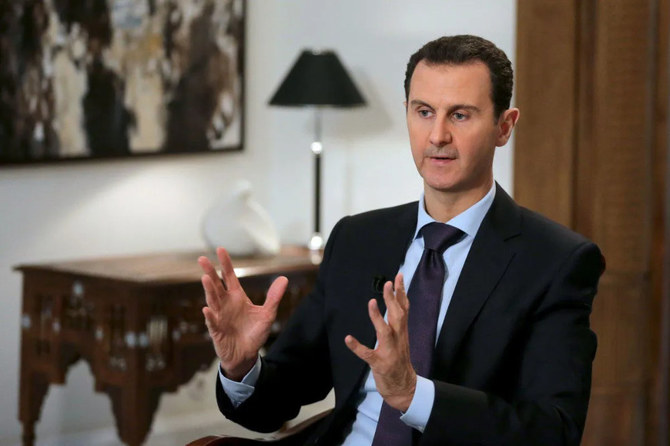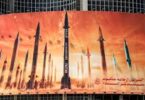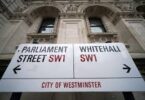Zaid M. Belbagi
When Arab streets erupted in protest more than a decade ago, the most vulnerable regime was that of Bashar Assad in Syria. Remarkably, as his more established counterparts were overthrown and even publicly lynched, the unassuming ophthalmologist has shown incredible grit, holding on to power at any cost. The reignited crisis in the Middle East not only risks exposing the fragilities of his regime, but it also provides an opportunity for Assad to reimpose his writ upon Syria.
Twelve years have elapsed since Syria was overcome by nationwide protests and rebellion. Following the displacement of 12 million Syrians, vicious internal conflict, the establishment of a terrorist proto-state and, most recently, a debilitating earthquake, the only enduring factor has been the regime that Assad inherited from his father. Stepping out from the cold, he has carefully choreographed his regional political rehabilitation, with the reopening of Arab embassies and, significantly, Syria’s readmittance to the Arab League.
However, the worst protests since 2011 threatened to undo this work when, last month, public outrage at the prevailing economic crisis and resentment with the regime gripped the country. Having worked to curtail the role of Iran and Russia in propping up his regime, the protests highlighted Assad’s vulnerabilities. But concerns with the economic crisis and the fifth decade of Assad rule have shifted as the Israeli-Palestinian conflict has reignited. The deployment of a great power naval presence in the Eastern Mediterranean in recent days was in response to the perceived threat of Iran. Iranian Foreign Minister Hossein Amir-Abdollahian last week shuttled between Beirut, Damascus, Baghdad and Doha, underscoring his country’s muscular influence across the region. His visits have stoked concerns that the further involvement of Iran or its proxies could tilt the conflict out of Israel’s favor. Simultaneous Israeli airstrikes on Aleppo and Damascus airports were indicative of Tel Aviv’s concern that Iran-backed militias could become involved in the conflict by way of Lebanon or Syria. Shellfire from Syria landing in northeastern Israel has increased these concerns.
Having propped up the Damascus regime through the deployment of economic and military assistance, Iran’s continued support has allowed Assad to retain control. It has, in turn, provided an important foothold for Iran to support its proxies, Hezbollah and Hamas. Given that Hezbollah possesses an arsenal of some 150,000 rockets, it is little surprise that, with the conflict not going its way, Israel is concerned about the opening of another front. Syria, therefore, would seem to be teetering on the edge of becoming embroiled in the conflict, but in this complex scenario the Assad regime eyes an opportunity amid the chaos.
The immediate crisis in the region serves the Assad regime on multiple fronts. It has successfully diverted attention from the chronic internal issues in Syria, while simultaneously concerning both the US and Israel with the Iranian presence on Israel’s northern borders. Though Iran’s enduring presence weakens the ability of the Syrian regime to operate independently, it does allow the regime to portray itself as a supporter of both Hezbollah and Hamas, both of which are perceived as a useful tool in containing Israel. The utility of this stance for Damascus was evident during its support for Hamas during operations like the Al-Aqsa Flood, allowing a regime that has aligned itself with Iran to paradoxically claim to be the last bastion of Arabism.
But Assad is in a bind, relying on Iran to stay on the front foot in the conflict, while also betting on the conflict to deliver a significant reduction in Tehran’s appetite for hegemony. Though China, Russia and Iran have been integral to his durability, the rebuilding of the country and his regime’s ultimate survival relies on Syria’s wider international rehabilitation. Syria stands to gain from new supply chains connecting India with Europe through America’s Partnership for Global Infrastructure and Investment, which plans to draw in Israel alongside Saudi Arabia, Jordan and the UAE. However, should the Shiite axis emerge from this conflict emboldened, Assad will neither be able to reinforce his regime nor rebuild Syria, increasing the prospect for further unrest.
There is no doubt that the aftermath of the Israeli-Palestinian conflagration will have a lasting impact on the region’s geopolitical layout. Assad will either have an opportunity to break free from Iran’s shackles or it will remain bound by them and unable to engage more broadly.
The Assad regime’s survival therefore hangs in the balance. Though his strategic alliances and recent diplomatic forays are significant, they might not be enough. Repairing Arab relations, avoiding isolation and pursuing economic reforms are vital steps that, if not taken, could jeopardize his hold on power. The intricate interplay of regional politics, economic stability and international alliances will ultimately determine the fate of the Assad regime.







